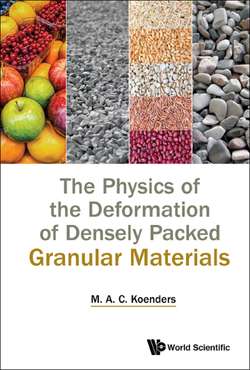Читать книгу The Physics of the Deformation of Densely Packed Granular Materials - M A C Koenders - Страница 11
На сайте Литреса книга снята с продажи.
1.4Contact laws
ОглавлениеWhen drawing up a suitable constitutive law for contact relating contact displacement and contact force the first thought should be ‘what is it meant to achieve?’ In molecular studies and studies of small particles in liquids very sophisticated interactive relations have been put forward that account for surface potential effects and quantum mechanical interactions. These relations are highly non-linear and allow for both repelling and attractive phenomena. However, in dealing with larger particles a simple law that just ensures that the particles only overlap by a very small amount would appear to be sufficient. The difficulty with increasing sophistication is that it requires more and more parameters, which may be difficult to measure. Also, the benefit of more complex laws is marginal. The need for a contact law arises from the existence of a statically indeterminate state. The first goal is to fix this problem by simple means and get some insight in the properties of such systems. Added complexity can be inserted later as a refinement.
Any two surfaces that touch one another could in a first approximation be assumed to repel one another as springs. This gives a relation for the normal force between the surfaces that is characterised by merely the spring constant k. The latter will generally be a function of the contact force itself. The non-linearity that is associated with that gives rise to the need to introduce incremental contact laws (the need for incremental laws will be discussed in more detail below). So, if the normal displacement D⊥ is related to the normal force F⊥ via a spring constant
Then the incremental law reads
The function k(F⊥) may contain a number of features. In addition to the non-linearity the incremental spring constant may be either assumed to be entirely elastic or reflect certain plastic effects (that is, have different values for loading and unloading).
